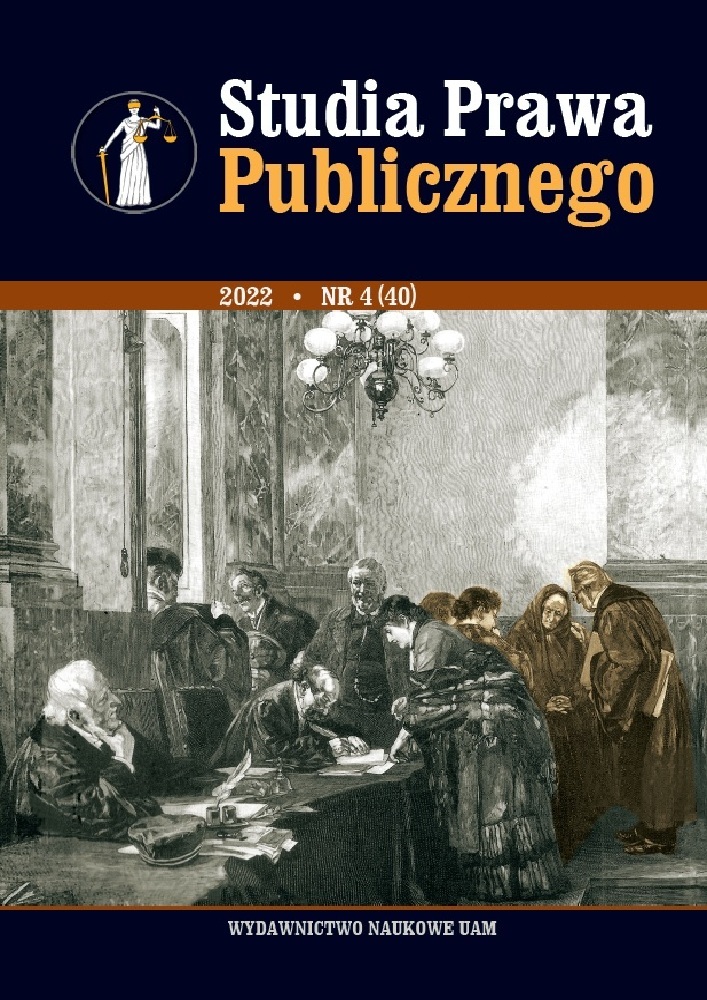Abstrakt
In 2016, while testifying before a UK parliamentary committee, William Binney, former technical director of the US National Security Agency, stated that by implementing bulk surveillance programmes, “your government and my government has permitted what terrorists have wanted all along but could never achieve. That is to cause us to restrict our freedoms while also tripping up our efforts to stop them”.
Despite the passage of years, controversy about the proportionality of the use of surveillance programmes involving indiscriminate and bulk data collection continues unabated. There are numerous arguments that such measures should not be used in democratic states. Despite the recurring reports of abuse and questionable usefulness of such solutions, there is also no shortage of arguments put forward by proponents of the use of untargeted measures proving the need (or even necessity) for their use for public security purposes.
The issue presented here is also the subject of ongoing interest on the part of legislators and the judiciary. The article aims to provide an overview of the evolution of the ECtHR’s position on the use of electronic surveillance, in particular its untargeted forms. However, the article is intended not only to recapitulate the reasoning as set out in recent case law – including the 2021 judgments of the Grand Chamber in Big Brother Watch et al. v. United Kingdom and Centrum för rättvisa v Sweden – but also to prompt further discussion on the relevance of the Court’s position as set out in relation to the most important legal issues relating to mass surveillance. It is the author’s intention that in this way it will be possible to answer the question of whether the current standard set by the ECtHR can be considered sufficient to protect against the risk associated with the spread of modern surveillance measures and their increasing use by public authorities.
Bibliografia
Banks W.C., Next Generation Foreign Intelligence Surveillance Law: Renewing 702, „University of Richmond Law Review” 2017, nr 51(3).
Barnea A., Strategic intelligence: a concentrated and diffused intelligence model, "Intelligence and National Security" 2020, nr 35(5). https://doi.org/10.1080/02684527.2020.1747004 DOI: https://doi.org/10.1080/02684527.2020.1747004
Bernal P., Data gathering, surveillance and human rights: recasting the debate, "Journal of Cyber Policy" 2016, nr 1(2). https://doi.org/10.1080/23738871.2016.1228990 DOI: https://doi.org/10.1080/23738871.2016.1228990
Bradford A., The Brussels effect: how the European Union rules the world, New York 2020. Buono I., Taylor A., Mass Surveillance in the CJEU: Forging a European Consensus, "The Cambridge Law Journal" 2017, nr 76(2). https://doi.org/10.1017/S0008197317000526 DOI: https://doi.org/10.1017/S0008197317000526
Celeste E., The Court of Justice and the Ban on Bulk Data Retention: Expansive Potential and Future Scenarios, "European Constitutional Law Review" 2019, nr 15(1). https://doi.org/10.1017/S1574019619000038 DOI: https://doi.org/10.1017/S1574019619000038
Dhont J.X., Schrems II. The EU adequacy regime in existential crisis?, "Maastricht Journal of European and Comparative Law" 2019, nr 26(5). https://doi.org/10.1177/1023263X19873618 DOI: https://doi.org/10.1177/1023263X19873618
Donohue L.K., The future of foreign intelligence: privacy and surveillance in a digital age, New York 2016.
European constitutional courts towards data retention laws, pod red. M. Zubika, J. Podkowika, R. Rybskiego, Cham 2021.
Goitein E., Another Bite Out Of Katz: Foreign Intelligence Surveillance And The “Incidental Overhear” Doctrine, „American Criminal Law Review” 2020, nr 55(1).
Grabowska-Moroz B., Ochrona gromadzonych danych telekomunikacyjnych i zasady ich udostępniania na tle Konstytucji RP i prawa Unii Europejskiej, „Europejski Przegląd Sądowy” 2016, nr 1.
Grzelak A., Trybunał Sprawiedliwości ponownie o relacji między koniecznością zwalczania przestępczości a prawem do prywatności, „Europejski Przegląd Sądowy” 2017, nr 3.
Guliani N.S., The Government Is ‘Incidentally’ Sucking Up Tens of Millions of Americans’ Communications a Year, and It’s a Privacy Nightmare, American Civil Liberties Union (23 III 2017), https://cli.re/xabKxA (dostęp: 7 IX 2022).
Hammer L., Re-examining the extraterritorial application of the ECHR to northern Cyprus: the need for a measured approach, "The International Journal of Human Rights" 2011, nr 15(6). https://doi.org/10.1080/13642981003617204 DOI: https://doi.org/10.1080/13642981003617204
Jacobs B., Maximator: European signals intelligence cooperation, from a Dutch perspective, "Intelligence and National Security" 2020, nr 35(5). https://doi.org/10.1080/02684527.2020.1743538 DOI: https://doi.org/10.1080/02684527.2020.1743538
Johnson C., German loophole allows BND spy agency to snoop on own people, „The Guardian” 29 XI 2014, https://cli.re/47ejk3 (dostęp: 7 IX 2022).
Kim S., Perlin P., Newly Disclosed NSA Documents Shed Further Light on Five Eyes Alliance, „Lawfare” (25 III 2019).
Laperruque J., Executive Order 12333: The Spy Power Too Big for Any Legal Limits, „Project on Government Oversight” 24 III 2022, https://cli.re/eqD3Zk (dostęp: 7 IX 2022).
Malgieri G., De Hert P., European Human Rights, Criminal Surveillance, and Intelligence Surveillance: Towards „Good Enough” Oversight, Preferably but Not Necessarily by Judges, w: The Cambridge Handbook of Surveillance Law, pod red. D.C. Graya, S.E. Hendersona, Cambridge 2017.
Licencja
Prawa autorskie (c) 2022 Marcin Rojszczak

Utwór dostępny jest na licencji Creative Commons Uznanie autorstwa – Użycie niekomercyjne – Bez utworów zależnych 4.0 Międzynarodowe.

